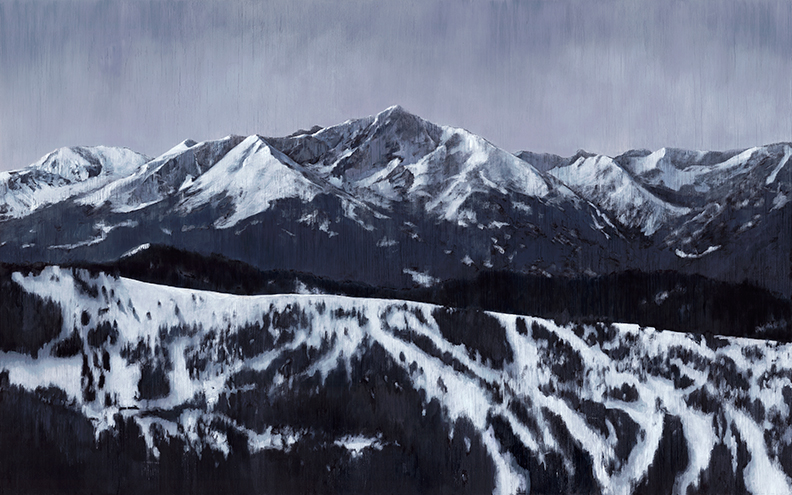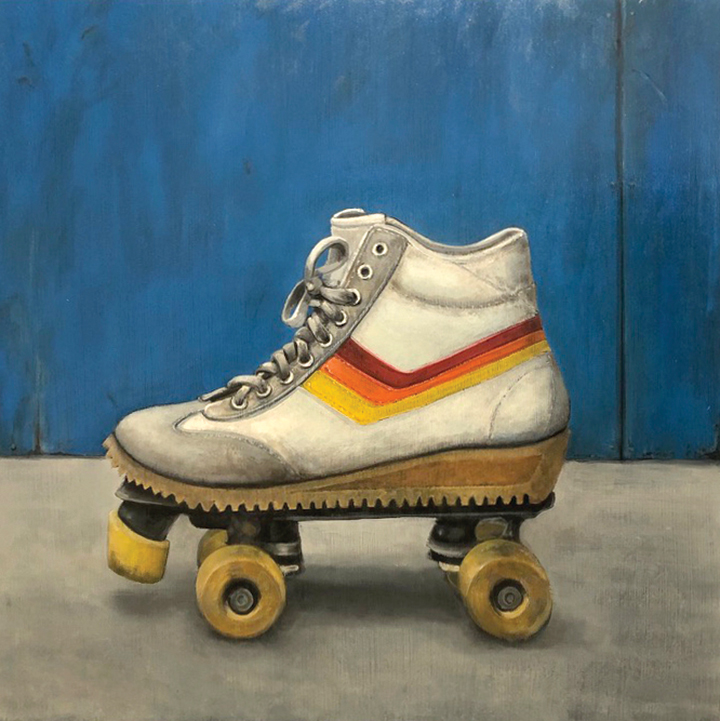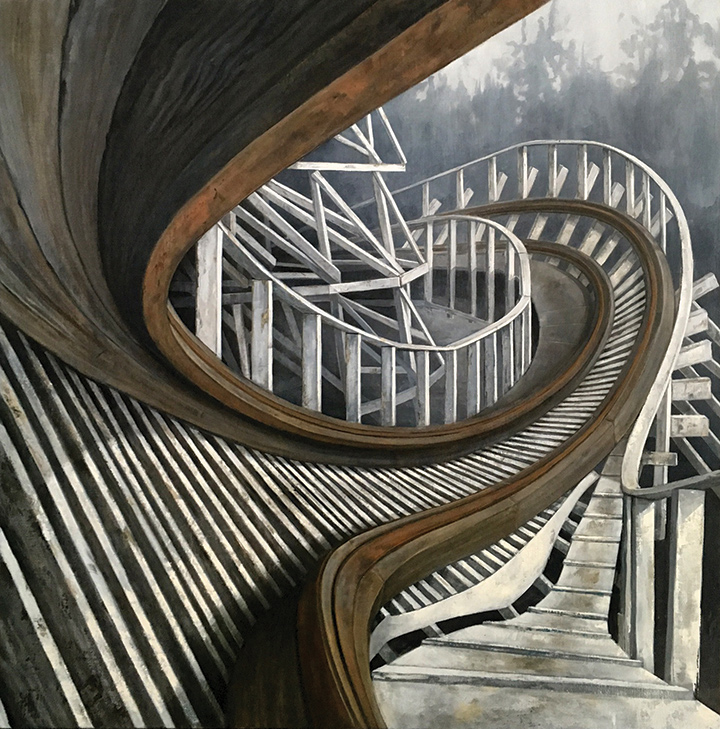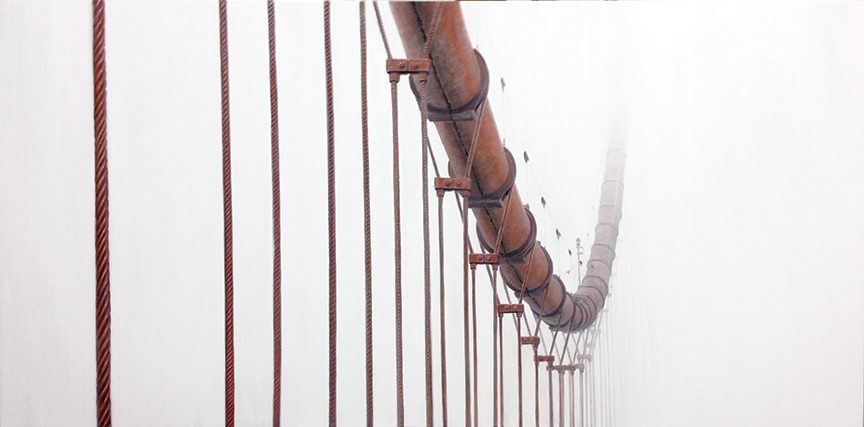BY SAM DESTEFANO
Jared Hankins, the Colorado native and Denver-based fine artist is fluent in a variety of styles ranging from abstract to realism. While he is known primarily for contemporary realistic oil paintings it is truly inspirational to see the scope of his work and career which has led him to work with so many different people on a variety of different projects. His commitment to openness and exploration while managing his amazing attention to detail represents the powerful spirit of the greatest artists. We are so pleased that we had the opportunity to learn more about his experience here!
 As a self-taught artist, we would love to know more about your background and the “journey exploring your craft?”
As a self-taught artist, we would love to know more about your background and the “journey exploring your craft?”
I started my career in ink and watercolor. I had a sort of fashionable style that got some recognition, and the pieces were relatively quick to produce. This allowed me some time to explore painting. After a very brief stint using acrylics, I moved into oils which have continued to be my primary medium for the last 25 years.
I think the ‘craft’ portion of the journey includes more than just understanding mediums though. Young artists are frenetic and have 10,000 ideas, so I found myself cranking through paintings that were okay, but not great. I realized that ideas need to incubate – the longer I thought through what I wanted to paint, the better the paintings became with less effort. I learned to align my vision with my ability and have the awareness to not force a painting just because it was a good idea. I have whole bodies of work in my head that stay dormant for years until the right set of control, ambition, and ability come along to make them happen.
 Having spent most of your 20’s living in Wash Park, can you tell us a little bit about that experience?
Having spent most of your 20’s living in Wash Park, can you tell us a little bit about that experience?
Wow. I am not sure I can do it justice – it was an incredible time to be in Denver! In 1998, I moved into a basement apartment of a house on Downing – literally on the center of Wash Park. I was 22 and had to scrape together $175 each month for rent which seems just ludicrous now. Denver had this vibe that was almost palpable. Coors Field and LoDo were brand new, and the Avs and Broncos were both in the middle of multiple championships. There was an electricity buzzing through the city. The Santa Fe Arts District was just bookends by visionaries Sandy Carson and Jeanie King of the Carson and Fresh Art Galleries. In the early 2000s, I moved into an art studio on 9th and Santa Fe, and over the course of the next 7 years watched the district fill in. Art walks went from 100 people to 3000+. Wash Park, Platte Park, the Golden Triangle all had a beautiful melding of old dive bars, music venues, and new chic restaurants. It was still a cow town, but there was a sense it was all changing.
You and Michael Burnett, of Space Gallery, have known each other for over 20 years, yet you have not collaborated until now.
Ya. I have known Mike for my whole career. We met through a mutual acquaintance, and I turned him onto a gallery space on 8th and Santa Fe. He was showing some extremely talented artists that I respected – heavyweights fresh out of art school like Lu Cong and Lui Ferreyra. I did not have the style or ability to hang alongside that crowd at the time, but as years clicked by, Mike kept tabs on my work. I stopped by his recent art show and he mentioned wanting to show some of my work. I was extremely honored.
 Can you tell us about your upcoming show?
Can you tell us about your upcoming show?
I have a lot of different styles that I paint, so rather than limit it to one, he wanted to show the range – how artists can move from realism to abstract, and even into graphic art. The styles span my career, but all of the work is current. We have access to a beautiful, old warehouse where Mike and I have been painting large format abstract work that we will include in the show as well. It is sort of a study on how environments shape the art. The space is big and industrial, so we are painting with brooms and mops on a scale that is hard to fathom. The roll of canvas we are working with is 12’x50yrds. We are able to crop out the compositions after mopping them out – pinning them up to finish them vertically. It is liberating and intimidating, and on the verge of ridiculous, but I am looking forward to seeing what comes out of it.
Where do you find the most inspiration for your pieces and what is the process of turning that into art?
Inspiration comes from everywhere and can be overwhelming. One of the hardest things to manage as an artist is what to pursue and why. For me personally, inspiration could come from a tone or texture or place – usually visual. When I get inspired, I like to gather ideas and research the subject – what is the history, look for imaging, what other artists have created in the genre, etc. Ultimately why is it important or significant, can I approach it with a meaningful and fresh angle, and does it justify a painting or a body of work?
These subjects don’t always have to be historic or groundbreaking, but often these inspirations will push talents to new spaces.
I have always been fascinated by roller coasters – old, tattered, wood structures are chaotic, and look thrown together – contrasted by elegant steel tracks cutting lines through space. I thought ‘I wonder if anyone has painted a roller coaster?’ As I began digging up imaging and researching other artists – I couldn’t find anything, so I embarked on my first roller-coaster painting – a 60”x60” piece from the perspective of the first car. I got about ten hours into the piece and realized why there were no roller-coaster paintings – they are extremely complicated, and this thing could end up taking a few hundred hours. But like all work, if you commit, good things happen. I learned new elements of control and efficiency while pushing myself into spaces I had not been creatively.
As I painted, I realized I was painting this giant metaphor of my life. It was complicated and edgy, it had elements of control and chaos, the rust and old wood showed the character we all wear physically or emotionally. I thought that if it resonated with me, it would resonate with other people, and it did. Everyone has an opinion about roller coasters – they are scary or fun or make you sick or make you feel like a kid. These pieces pushed my skillset and gave me a deeper understanding of my approach.
What are some of the most powerful lessons you’ve learned about art?
Artists do not create a masterpiece, the public does. It is up to the viewer and the critics, not the artist, so paint every inch with intension and let other people figure it out.
 You have an eclectic portfolio. What drew you to these different bodies of work and how do you, almost effortlessly, shape-shift between them?
You have an eclectic portfolio. What drew you to these different bodies of work and how do you, almost effortlessly, shape-shift between them?
I have always loved exploring. I will typically paint small bodies of work, 5-7 paintings, and move on when I have learned enough to return to that subject. As these pieces get out into the world, I end up returning to them because of commissions or requests from galleries.
How does it feel to return to an older series?
It is always interesting because I have evolved as an artist. I recently had the opportunity to remake a painting of mine that hangs in the lobby of the Ritz Carlton in Bachelor Gulch. It was a fascinating process to step back into 2008 and try to remember what colors and brushes I was using, the effects and layering, etc. Physically trying to copy my own work so many years later was a trip. It was remarkable to see how I have changed, and yet it was all still familiar.
Over the years you have collaborated with a lot of incredible people. How did these collaborations push you in new directions?
One of my more influential collaborations came by chance – working with a consulting firm in Boulder. I was invited to help come up with new ideas for Smirnoff and Guinness. I brought product ideas sketched out on paper and after that session, they began hiring me to help translate their clients’ ideas. During Ideations (idea generating sessions) I sketched out ideas they were built out. I would tighten the renderings through different rounds as the products came to fruition. It was a cool gig and I learned about branding and product development on an extremely high level. The Creative Director was an incredible mentor and became one of my closest friends. I even met my wife there! Over 15 years I got to work on dozens of brand name products – Starbucks / Pepsi Co, Fritos, Tostitos, Doritos, Schick, SC Johnson, Werther’s, Hershey’s, Epcot, etc. It is always cool to see products that I worked on out in the world.
Do you have any advice for artists starting out or upcoming artists in our community?
General advice I always tell artists is that if you think a piece is done, work on it for 10 more hours. As far as Denver artists – we have one of the highest artists per capita. Don’t think of it as competition, get out and collaborate and get involved. We have incredible galleries, museums, and events that are thriving because of artists like yourself.
Where can people find your work?
www.hankinsfineart.com. Space Gallery in Denver, Valley Fine Arts in Aspen, Sense Fine Art in Menlo Park.
We’re so excited to see the next page in your evolution as an artist. What can we expect from you in the future?
We will be looking for our next building to paint more abstracts in. At some point I would love to do a retrospective show based on 1980s Denver – youth, nostalgia, and the places that only remain in memory.
Thanks so much, Jared, for taking a moment with us! We can’t wait to see your upcoming show at Space Gallery.


